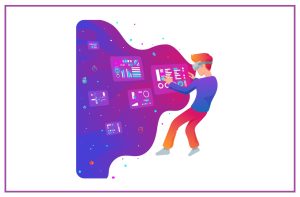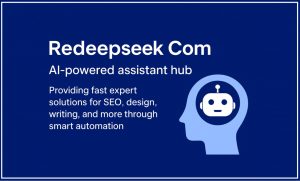Excellent SEO Tips That Will Improve Your Web Design
Having a good website is the basic condition of starting a business nowadays. Due to the advancement of technology, every person uses search engines for fulfilling their varied needs. Considering this, every company is spending time, money and expertise to create a perfect website for their business.
An ideal website should not only have a good design but also, a high ranking in search engine results. Without SEO, your potential clients won’t be able to find your website as it will be lost somewhere in the last pages of SERPs. Having a user-friendly or beautiful website is wastage without getting users.
So, business owners are looking for such web designers who have sound knowledge of SEO and can imply SEO tips for improving web design. Many freelance web designers are blending their SEO and web design knowledge to create beautiful and SEO friendly websites.
Using SEO tips that will improve your ranking as well as your web design equals to killing two birds with one stone. We are here with some SEO tips through which you can serve both the purposes.
10 Reasons to Hire a Digital Marketing Agency
Use JavaScript for Website Navigation:
It becomes very tough for search engines to crawl through a website that uses flash for navigation. Search engines need much time and efforts to evaluate such sites. And not everyone knows how to make flash objects accessible and search engine friendly.
So, you should use CSS and JavaScript as Google bots can easily crawl through them and it can provide fancy effects just like any other software.
Place Scripts Outside HTML Document:
You should externalize the CSS or JavaScript while coding your website. Search engines view a website through its HTML documents. JavaScript and CSS add extra coding lines into your HTML documents if they are not externalized. These extra elements will make the crawling process much slower.
So, complicated HTML documents with lots of CSS and JavaScript lines will enhance the difficulty of Google crawlers which can become a reason for your low rank.
Optimize Website Images:
Your website should contain images that are properly optimized for search engines. The high-quality images are often large in size that can slow down your website. So, always check the dimensions of an image before uploading it on your website.
The ideal size image is 30 to 100 KB with a resolution of 72 dpi. You can compress the size of your desired images without compromising on their quality with the help of online tools.
Publish Content that Crawlers can Read:
Of course, your first priority should be your users while curating website content. But, you shouldn’t forget about Google crawlers at the time of content creation. Content is a very important element in determining your search engine rank. Good content can also make your website attractive and interesting.
Having very less content on your website isn’t a good sign, and it can become a reason for your constant struggle to attain a higher ranking. Your content should have proper headings, subheadings and paragraphs. It should also contain accurate long-tail keywords to appear in the initial pages of search results.
Create SEO-friendly URLs:
Ensure that the URLs of every page of your website are SEO-friendly. First of all, you should know the meaning of SEO-friendly URLs. The URLs that are easy to grasp, have accurate keywords, and contain 5-6 words are considered best by search engines.
Keep your URLs precise and separate each word in URLs with a hyphen. The URL should give an idea about the page to the users. Meaningful URLs get higher ranks by search engine bots.
Block Pages that Add no Value to Site:
There are some pages that designers generally add to test the designs and other elements to a website. These extra pages don’t add any value to the website so; you should hide them from Google crawlers. These pages can generate new problems like duplicate content issue and low search engine ranking if they will be assessed by the bots.
You couldn’t let the search engines index these pages of your website. Use robots.txt files to prevent certain web pages from being indexed. Protect the testing pages with a password or use a local web development environment like WampServer or XAMPP.
Add Image Alt Attributes Carefully:
Alt attributes make your website more authentic, descriptive and SEO-friendly. To become W3C-complaint, your website needs accurate alt attributes with images. Some people add anything as alt text without much thought but, this practice can be harmful.
So, you should be careful while adding alt attributes to the images. These should contain keywords and align with the images as bots use alt attributes to understand and rank the websites. These are also essential to appear in relevant image search results.
Add Fresh Content Regularly:
Adding fresh content on your website in the form of blogs, news and other posts makes it more user-friendly. Along with it, this practice also shows to search engines that your website is still alive and you are constantly interacting with your clients through it.
Hence, always have room for more articles and blogs on your website. Keep adding new content weekly or monthly to illustrate your activeness. And don’t add anything for the sake of doing it. Add only interesting, engaging and authentic content.
Make Use of All Heading Tags:
Heading tags are given so that you can arrange your content in the proper hierarchy. Know that search engines place a higher value on the information provided in these tags relative to other texts on the web page. So, use all these tags to arrange your content properly.
Place your main heading in the H1 tag, subheading in H2 tag and so on. Utilize tags from H1 to H6 to create an outline of your content. Try to add relevant keywords to these tags as they are mostly noticed by search engines and users.
Hence, use these tricks to improve your web design along with optimizing your site. Hire a freelance web designer for assistance.



